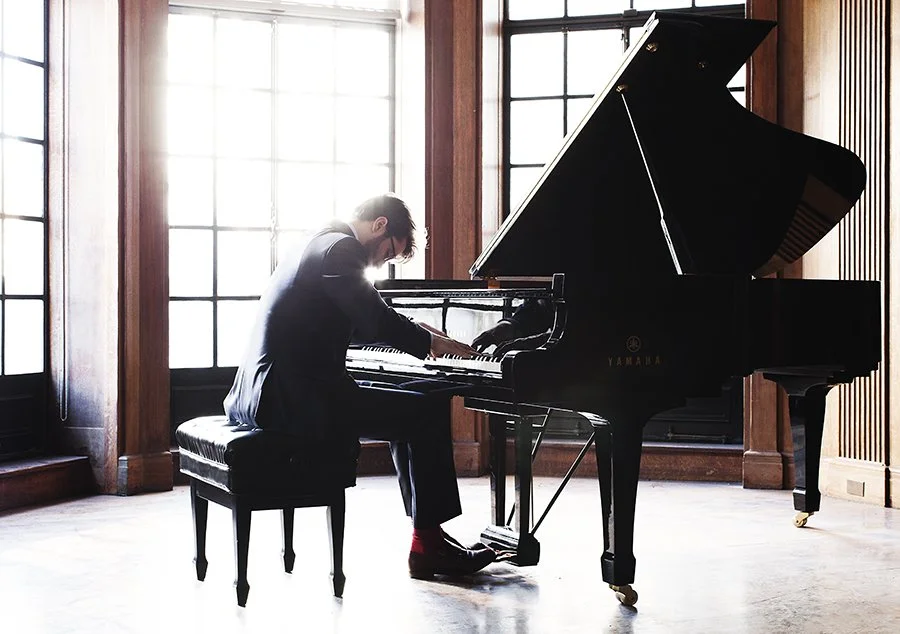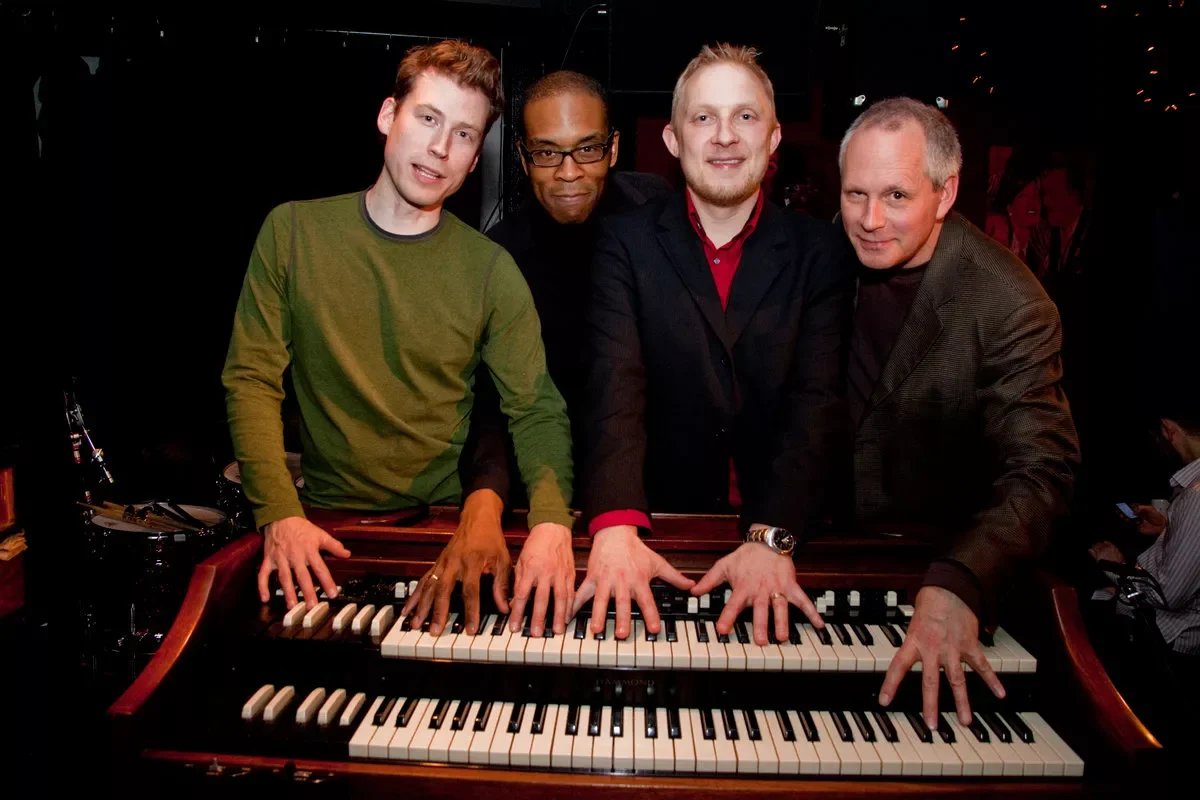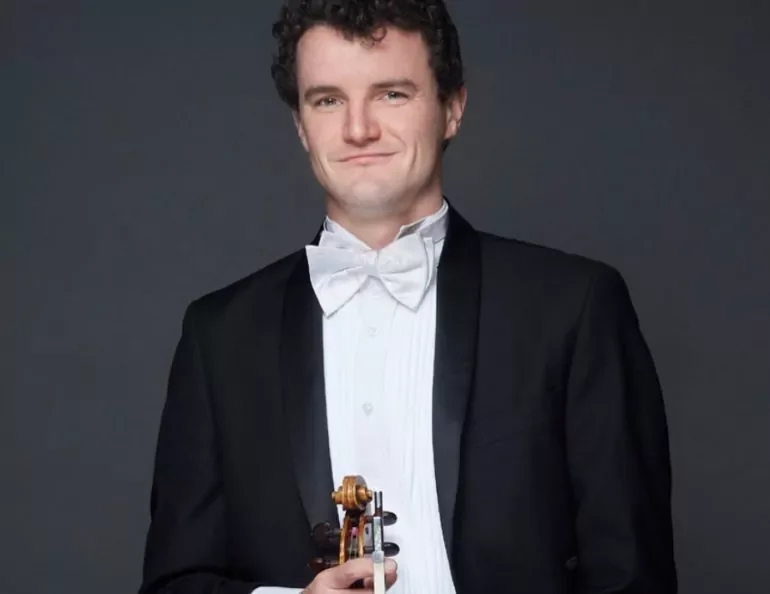David Kaplan journeys through three centuries of piano, at Music on Main
Beethoven and Schumann interweave with the avant-garde, plus pieces the virtuoso commissioned during the pandemic
David Kaplan brings a generosity and warmth, as well as a sense of play, to a program that’s astonishing in its breadth.
Music on Main presents David Kaplan at the Fox Cabaret on Tuesday (May 31).
THOUGHTFUL CURATION and extreme diversity are the hallmarks of the program that David Kaplan has prepared for his Vancouver listeners.
The pianist’s upcoming Music on Main concert will span three centuries of keyboard music, ranging from François Couperin’s Les Barricades mystérieuses, from 1717, to works that Kaplan commissioned during his pandemic layoff. He’ll touch on classics of the keyboard repertoire, including Ludwig van Beethoven’s Sonata No. 13 in E-flat Major and excepts from Robert Schumann’s Davidsbündlertänze, but will also delve into the avant-garde terrain of the prepared piano, with American composer Christopher Cerrone’s hyper-percussive Passagework. And while his final set list has yet to be determined, he’ll also nod to European modernism with works by the Finnish composer Kaija Saariaho and, perhaps, her Hungarian counterpart György Ligeti.
It’s a singularly impressive collection of music, but the connections that Kaplan has embedded in his program are not readily apparent on casual inspection.
How does the pianist hope to reconcile the antique and the brand new, the sweet and the caustic, the minimalistic and the sprawling?
“That’s easy to answer, in that the connective tissue of the program is the grey area between composition and improvisation,” Kaplan explains in a telephone interview from his Los Angeles home. “All of the pieces are concerned with exploring that grey area, specifically in fantasy form—and, by extension, in the genre of the prelude.”
Although it’s increasingly acknowledged that many of the great composers were also great improvisers, extemporaneous creation is still not commonly identified as one of the hallmarks of classical music. Kaplan, however, subscribes to the theory that solo keyboard music began when composer-performers would improvise an introduction to their larger works, to set the mood or prepare listeners for what would follow.
“Even what we think of as the sonata, its origin was as an improvised oration at the keyboard,” he says. “So the notion of improvisation is germane to all piano music, but with these pieces I was interested in the common threads that make something improvisatory. What are the different ways in which composed pieces can retain some element of improvisation?
“Sometimes, as in the piece by Anthony Chung [Holding Patterns], the specific type of freedom and passagework that he asks for suggests an improvised texture, or in a way sounds as if it could be improvised,” Kaplan continues. “Because it’s hard to discern a clear metre, often his piece sounds rather cadenza-like, right? So you can have some music that sounds like it’s improvised. Or, in the case of the Beethoven, the “Quasi una Fantasia” sonata, he was trying to embody in the compositional process the association of seemingly unrelated ideas. In the written score, there’s an improvisatory element: going from one thing to an unrelated thing to another unrelated thing, at least on the surface. Of course, things are related, but their relative disjointedness is what’s foregrounded.”
That’s not necessarily what amateur ears will extract from Kaplan’s videotaped performance of the Sonata No. 13 in E flat Major, which can be viewed on YouTube. Although the work does contain radical leaps of feeling and texture, what comes through most clearly is the composer’s sense of play—another hallmark of improvisation.
“I’m very much conscious of that, and particularly with that sonata,” Kaplan says. ”The much more famous sibling of that piece is the ‘Moonlight’, which is such an intensely poetic and dark musical statement. Not to define something by comparison with its foil, but I think it is fair to say that the E flat sonata has a kind of humility of content that makes me think of… Well, of a simple person maybe showing you around their small house, and showing you the everyday objects that are important to them, showing you their pets and giving you some leftovers for lunch. That’s the type of feeling I get from that sonata. It has a great deal of humour: not sophisticated humour, but humble and everyday humour, and certainly playfulness. I guess the word I’m thinking of is avuncular. It makes me feel like a gentle uncle is taking you around his house.”
At 39, Kaplan is just beginning to enter his own avuncular years, but his generosity and warmth are already evident. Getting to spend some time in his own musical dwelling should be a delight.
David Kaplan. Photo by Samantha West














